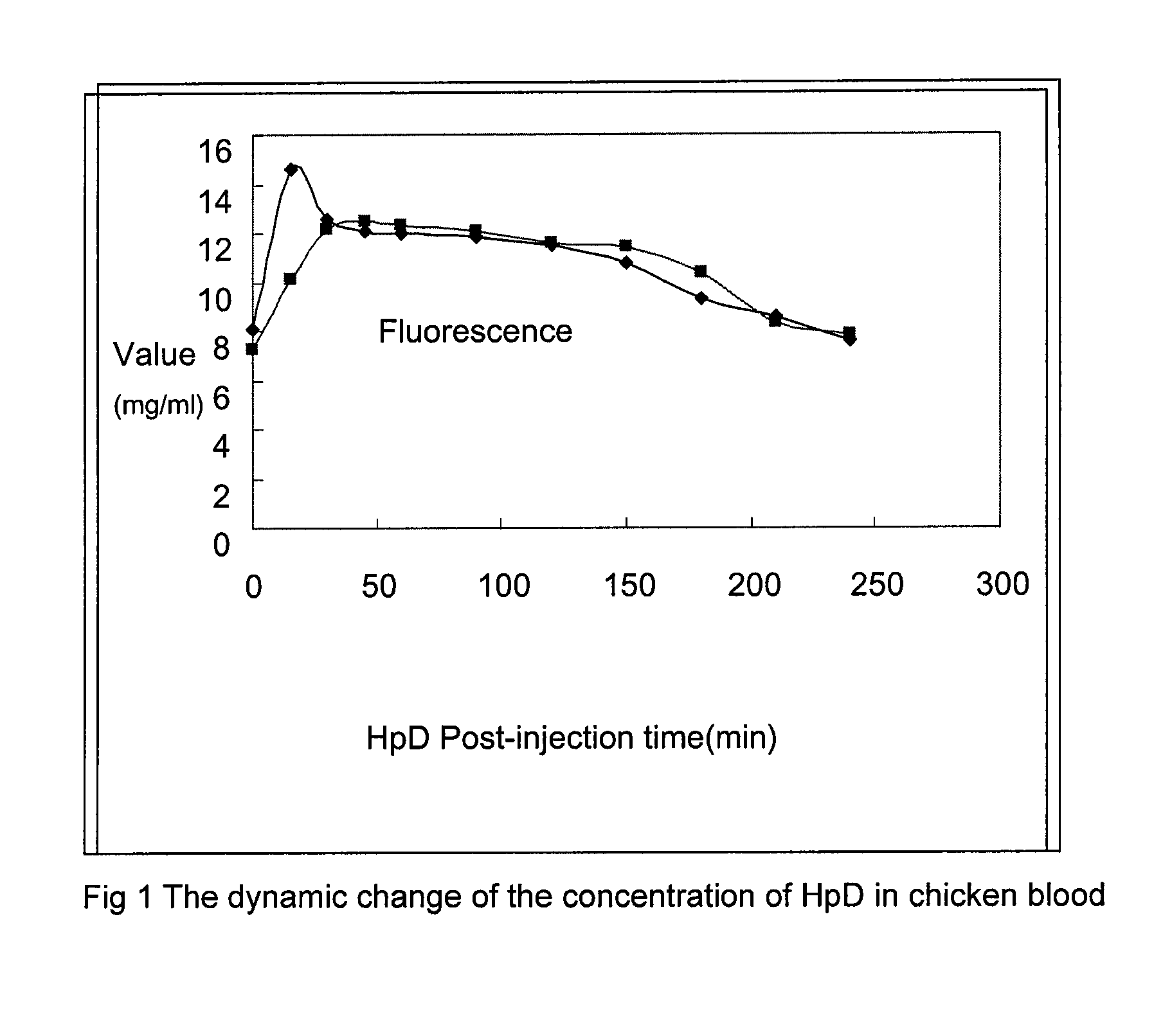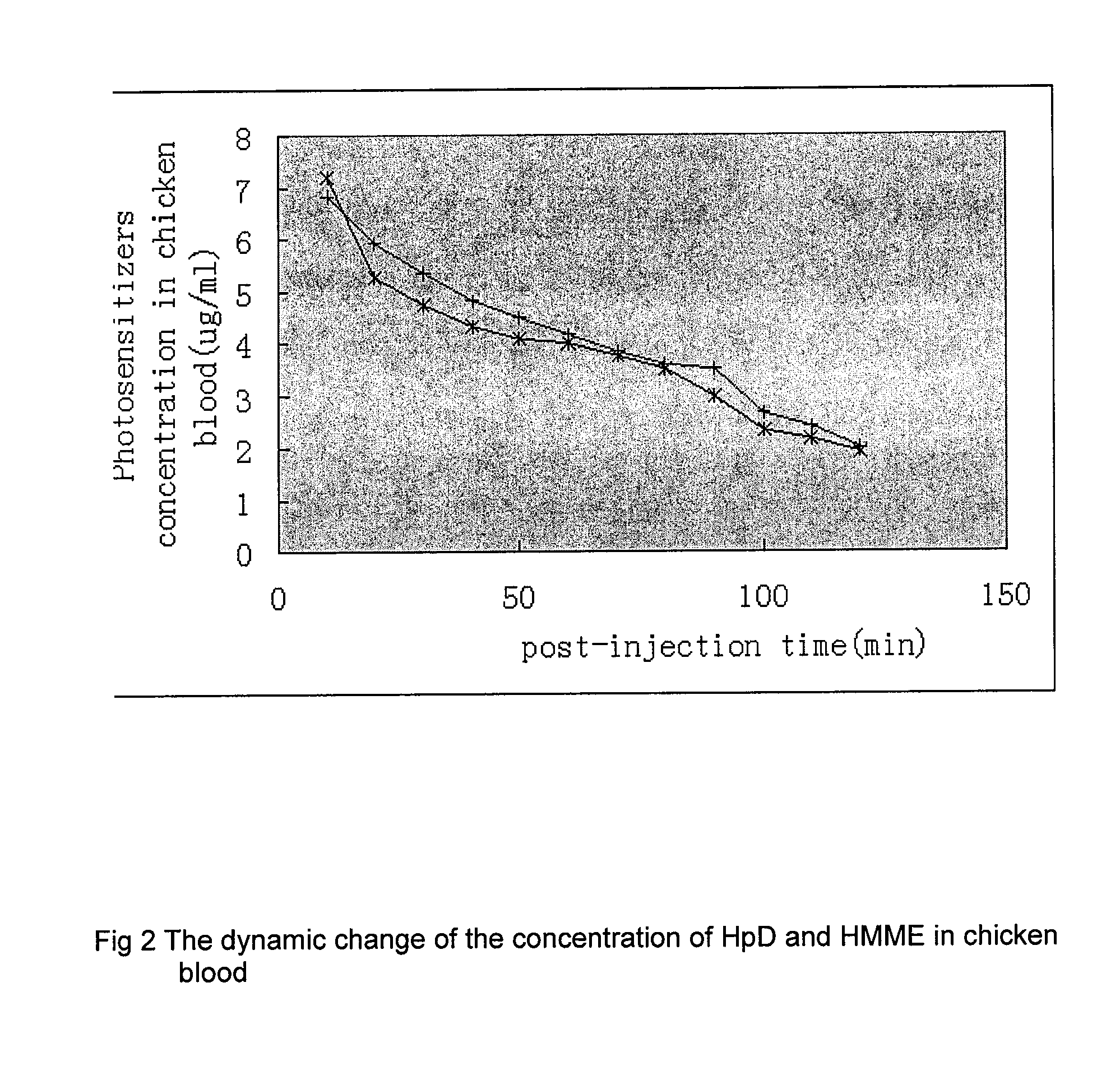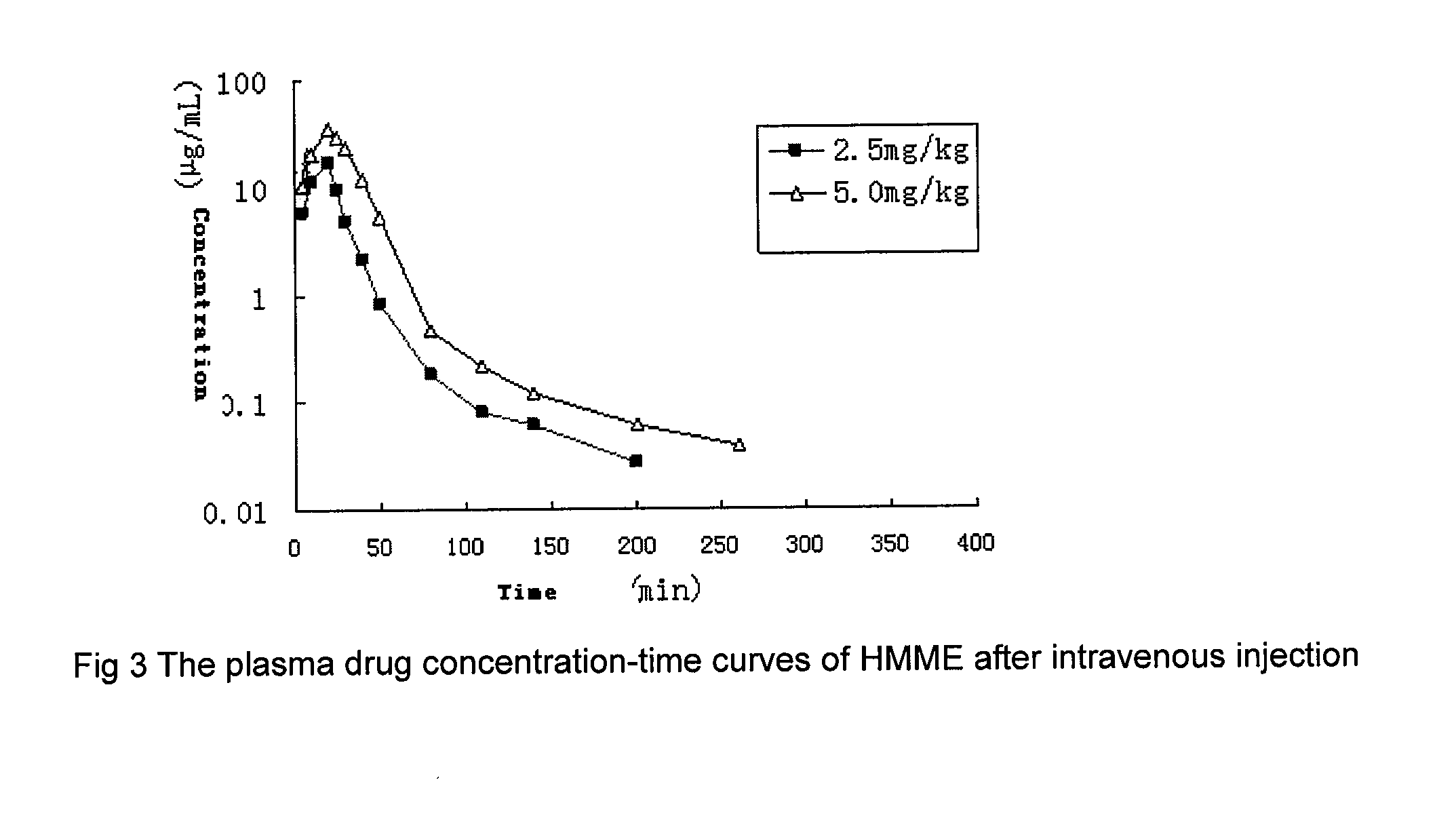Method for treating port wine stains
- Summary
- Abstract
- Description
- Claims
- Application Information
AI Technical Summary
Benefits of technology
Problems solved by technology
Method used
Image
Examples
example 1
Pharmacokinetics Studies
Dynamic Change of the Concentration of Poryphin Drugs in Chicken Blood
HpD and PsD-007
[0039]The concentrations of HpD and PsD-007 in a test animal's (i.e., chicken) blood was monitored by injecting the drug into the neck vein at a dose of 10 mg / kg of body weight, and taking blood samples approximately every 10 minutes. The results are shown in Table 4 and FIG. 1.
TABLE 4Dynamic change of the concentrationof HpD and PsD-007 in chicken bloodFluorescence value (mg / ml)Post-injection time (min)HpDPsD-00708.17.31514.610.13012.612.24512.112.56012.012.39011.812.112011.511.615010.811.41809.310.42108.68.32407.67.8
HpD and HMME
[0040]HpD and HMME in chicken blood were monitored at various times after injection. HpD or HMME was injected in chicken neck veins at a dose of 10 mg / kg, taking a blood sample every 10 minutes following injection. The results shown in Table 5 and FIG. 2 show that serum concentrations of both drugs reach a peak 10 minutes after injection and then dro...
example 2
Pharmacokinetics of HMME in Human Body
[0041]Porphyrin-based photosensitizing drugs were injected intravenously at a dose of 2.5 and 5.0 mg / kg body weight for 20 minutes with a constant flow rate, and the pharmokinetics measured. Blood samples were taken at 5, 10, 20, 25, 30, 40, 50, 80, 110, 140, 200, 260 and 380 minutes separately to measure the serum concentrations of porphyrin-based photosensitizing drugs.
[0042]The pharmacokinetic results shown in FIG. 3 show that the Cmax values of each dose is 17.491±7.045 and 35.724±4.539 μg·mL−1 respectively, the AUC0˜n value is 6.342±2.824 and 17.531±3.467 μg·mL−1·h, respectively, and the t1 / 2 values are 1.26±0.33 and 1.31±0.33 h, respectively.
example 3
Therapeutic Method
Assessment on PTD for PWS
[0043]A solution of 1 ml saline was injected in the superficial vein (e.g. median cubital vein) of patients to ensure no liquid leaked into tissues adjacent to the blood vessels into which the injection was made. At the same site, HMME was injected intravenously for 20 minutes with a constant flow rate by using an infusion pump. The doses applied were 2.5 mg / kg body weight or 5.0 mg / kg body weight. Next, 2-4 ml of saline solution was again injected to prevent the drugs from aggregating locally. Irradiation with KTP532 laser was then applied to the patient's lesion site 0-10 minutes after the start of injection, for a total duration of irradiation of either 20 minutes (denoted as the 20 min group), or 30 minutes (denoted as the 30 minute group). The laser had a wavelength in the range of between about 532 nm and a power density of about 80-100 mW / cm2.
[0044]When irradiation was started immediately after the start of injection, the overlap bet...
PUM
| Property | Measurement | Unit |
|---|---|---|
| Time | aaaaa | aaaaa |
| Time | aaaaa | aaaaa |
| Time | aaaaa | aaaaa |
Abstract
Description
Claims
Application Information
 Login to View More
Login to View More - R&D
- Intellectual Property
- Life Sciences
- Materials
- Tech Scout
- Unparalleled Data Quality
- Higher Quality Content
- 60% Fewer Hallucinations
Browse by: Latest US Patents, China's latest patents, Technical Efficacy Thesaurus, Application Domain, Technology Topic, Popular Technical Reports.
© 2025 PatSnap. All rights reserved.Legal|Privacy policy|Modern Slavery Act Transparency Statement|Sitemap|About US| Contact US: help@patsnap.com



